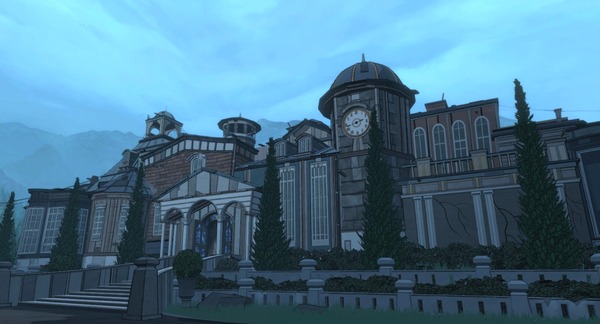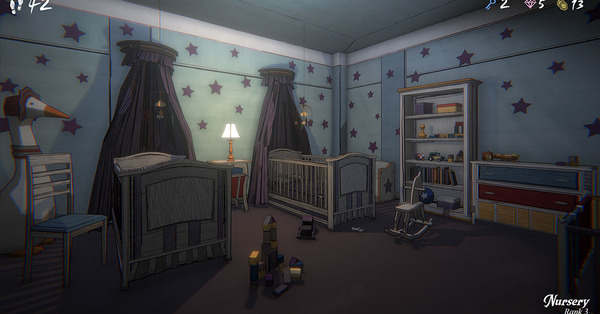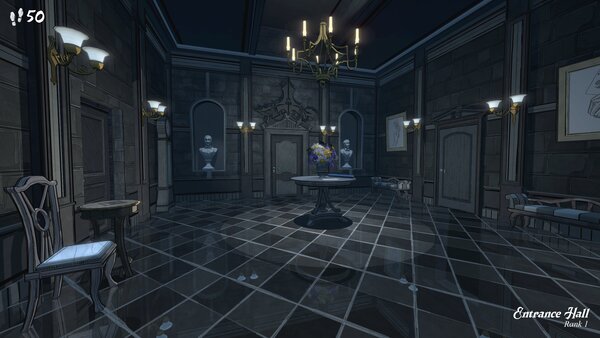Popular Now
The eerie, ever-changing mansion in Blue Prince isn't just a spooky setting—it's a living puzzle box of shifting architecture that responds to your decisions, emotions, and timing. At the core of this roguelike psychological mystery lies the dynamic room layout system, a procedurally generated and behavior-reactive structure that alters with every move you make.
This article dives deep into that core mechanic, offering comprehensive tips and strategies to understand, manipulate, and master the mansion’s rooms. You’ll learn about room types, memory anchors, illusion loops, catalyst triggers, and recursive room logic as you ascend the haunted tower.
Whether you're a first-time explorer or a seasoned climber of the mansion’s cursed levels, this guide will give you the tools to chart your own fate within the Blue Prince’s domain.
The Shifting Walls: Understanding Dynamic Layout Generation
From the moment you step into the mansion, the layout you experience is unique. That’s because Blue Prince uses a dual-layer procedural system: a foundational seed and a reactive memory engine.

Seed-Based Yet Responsive
The base layer of room generation is randomized using a seed. However, the second layer—the mansion’s memory engine—observes how long you linger, which rooms you revisit, and which you ignore. It then adapts by reshuffling, expanding, or removing certain paths in future floors.
For example, if you often avoid rooms containing music puzzles, the game may place them earlier and more frequently to force you into interaction.
Meaningful Room Categories
Rooms in Blue Prince aren’t placed randomly. They follow roles and logic, such as:
-
Binding Rooms: stabilize nearby layout logic
-
Catalyst Rooms: morph based on interaction or time
-
Memory Anchors: fixed points immune to procedural changes
-
Illusion Rooms: loops or recursive geometry tricks
Understanding what each room type does is essential for mapping your way forward.
Day One Navigation: Recognizing Early Room Types
Your first few runs (Floors 1–5) are critical for learning how room types behave and introduce logic cues for the floors ahead.
Identifying Binding Rooms
Binding Rooms can appear mundane but are key architectural pillars. Their layout doesn’t shift randomly like others. Common signs of a Binding Room include central totems, symmetrical decor, and unusual lighting (usually golden or white glow).
Knowing that rooms adjacent to a Binding Room will follow consistent layout rules helps in planning routes safely.
Key Features of Early Rooms
The following rooms commonly appear early on:
-
The Conservatory: introduces sound-triggered passages
-
The Nursery: teaches auditory hallucinations and looping doorways
-
The Dining Hall: hints at vertical logic—your actions above impact rooms below
Use these early rooms to study patterns and test behaviors. The layout may seem random, but it's learning from you.
Memory Anchors: The Only Safe Space in Chaos
Memory Anchors are sacred spaces within the mansion. They serve as your checkpoint but more importantly, they offer spatial stability—rooms around them do not change without cause.
How to Identify a Memory Anchor
Memory Anchors are typically quiet, unoccupied rooms with blue ambient light and no audio triggers. They do not contain enemies or puzzles. Once discovered, try exiting and re-entering them multiple times. If the room never changes, it's a confirmed Anchor.
Best Use of Anchors
-
Use chalk or digital notes to track nearby rooms
-
Consider backtracking to an Anchor every 3–4 floors to stabilize your run
-
Use them as test hubs for observing how rooms mutate beyond the Anchor radius
Anchors become exponentially more valuable the higher you ascend.
Midgame Transition: When Floors Begin to Defy Logic
After Floor 5, the mansion starts breaking its own rules. Catalyst Rooms begin to dominate, meaning room behavior now responds to in-run variables like time, fear level, and inventory state.

Introduction of Catalyst Rooms
Catalyst Rooms change after one or more visits. For example:
-
The Clockwork Study rearranges furniture and exits every 10 minutes
-
The Taxidermy Room flips its layout if you enter with a cursed item
-
The Wine Cellar spawns additional fake doors based on your lighting source
You are no longer just walking through rooms—you are influencing them.
Avoiding Layout Fatigue
When navigation becomes confusing:
-
Use Sigils (covered later) to freeze layouts
-
Return to Memory Anchors to stabilize surroundings
-
Track time on each floor—spending too long may trigger spatial "drift"
Climbing efficiently without re-entering too many Catalyst Rooms is the key to progressing deeper.
Advanced Room Logic: Learning Through Repetition
While the mansion seems ever-changing, there are meta-patterns that players can study and exploit. Over time, these repetitions form a kind of psychological map.
The Rule of Threes
Rooms often operate on triadic logic. For example, every third room on a given floor may mirror the first. If Room 3 feels familiar, compare it to Room 1—you may find matching door alignments or hidden cues.
Rotating Rooms
Certain rooms rotate their logic depending on previous actions. A good example is the Hall of Bells, which rotates clockwise or counterclockwise based on the order you picked up objects on the last floor.
Track what you did before entering each floor. The layout may be reacting to your memory.
Illusion Rooms: Escaping the Unescapable
Illusion Rooms are designed to trap or confuse players using recursive or mirrored geometry. They require unconventional behavior to exit.

Common Illusion Rooms
-
Endless Library: requires dropping a book to break the loop
-
Mirror Gallery: exits open only when you avoid looking at reflections
-
Crooked Nursery: changes based on ambient noise or humming
These rooms test your attention to sound, visuals, and movement. Don’t assume traditional inputs will work.
Escaping Loops
Tips for surviving Illusion Rooms:
-
Use reverse movement (walk backward)
-
Leave an object behind and see if it returns with you
-
Count seconds per loop—some loops break at specific time intervals
Patience and experimentation are more important than speed here.
Room Echoes and Long-Term Memory
After several runs, you'll start noticing familiar spaces returning—only slightly altered. These are Echo Rooms, and they reveal how the mansion "remembers" your decisions.
Echo Rooms Explained
Echo Rooms are not exact repeats but variations based on emotional state and interaction history. You may see a version of the Nursery from Floor 2 on Floor 9, but with broken toys or altered music, reflecting your past choices.
Strategic Use of Echoes
You can guide which rooms return by:
-
Spending more time in rooms you like
-
Avoiding cursed rooms, which may corrupt Echoes
-
Carrying similar items during runs to maintain memory paths
This meta-progression adds narrative continuity and strategic control.
Sigils and Room Binding: Seizing Control
Sigils are rare items that bind logic to rooms around them. They're the closest thing you get to spatial control in Blue Prince.
Common Sigils
-
Sigil of Stillness: prevents nearby rooms from changing
-
Sigil of Reversal: flips Catalyst Room rules (e.g., a danger becomes a reward)
-
Sigil of Veil: hides you from reactive rooms that track player behavior
Found in hidden vaults or created through alchemical crafting, Sigils are your best defense against chaos.
How to Use Sigils Effectively
-
Always place near Binding or Catalyst Rooms for maximum impact
-
Don’t overlap multiple Sigils—they may interfere with each other
-
Drop Sigils when you’re ready to commit to a floor path—no backtracking
Using them wisely can carve safe routes up multiple floors.
Floors 13 and Beyond: Recursive Room Chains
Once you pass Floor 12, you’ll begin to see recursive design—the mansion revisits itself with layered logic and conditions.

What Are Recursive Rooms?
These rooms don’t loop in a simple illusion. Instead, they reference past room states from earlier in the run—or even previous runs. You may be asked to re-complete a puzzle with a twist, or you’ll hear an echo of dialogue from a past encounter.
Navigating Recursive Floors
To survive:
-
Keep item loadouts consistent from earlier floors
-
Re-enact successful choices made earlier (e.g., drop an item again)
-
Avoid corruption flags—recursive rooms magnify corrupted behavior
The final climb becomes not just a test of gameplay but memory and moral decisions.
Conclusion: You Are the Architect
Mastering room layout logic in Blue Prince is less about brute-forcing randomization and more about decoding behavior. The mansion’s mind is partly yours—it feeds off your habits, fears, and choices. Every room you walk into is not just built for you but by you.
By learning the principles of Binding Rooms, Memory Anchors, Sigils, Catalyst Triggers, and Recursive Echoes, you can finally flip the mansion’s power structure on its head. The Blue Prince may own the halls—but you control how far you climb.
















